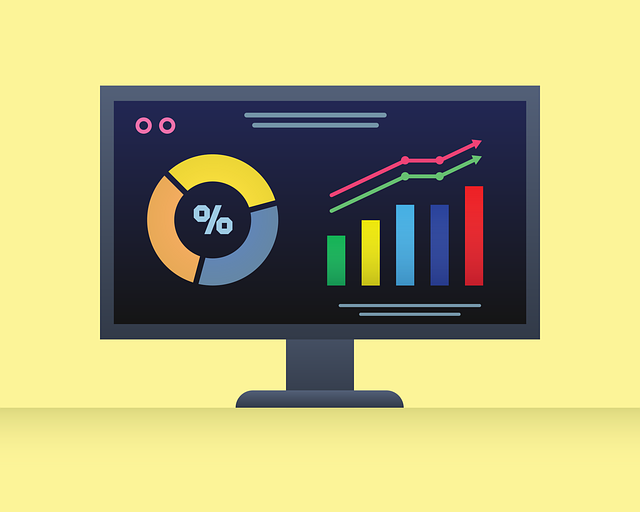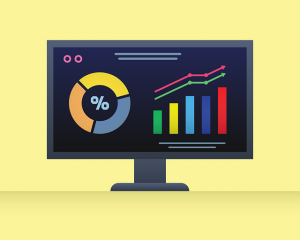
How Units of Measure Work in QuickBooks
 Have you come across units of measure in QuickBooks? The popular accounting software supports units of measure. Also known as U/M, it’s an optional feature that many businesses use when buying and selling products. What are units of measure exactly, and how do they work?
Have you come across units of measure in QuickBooks? The popular accounting software supports units of measure. Also known as U/M, it’s an optional feature that many businesses use when buying and selling products. What are units of measure exactly, and how do they work?
What Are Units of Measure?
Units of measure are metrics by which products are measured. Cleaning products and other liquid products, for instance, may use ounces as a unit of measure. Fabric, on the other hand, may use yards. With units of measure, you can specify metrics such as these for your business’s products. You can even specify different metrics for products that you purchase and products that you sell. You may purchase products from vendors using a larger metric, and you may resell them to your business’s customers using a smaller metric.
Single vs Multiple Units of Measure
You can assign units of measure using a single unit or multiple units. According to Intuit, a single unit of measure is designed for instances in which businesses only use one metric per product item. In comparison, multiple units of measures is designed for instances in which businesses purchase and resell product items in different metrics (as explained above).
Creating Units of Measure: What You Should Know
When creating units of measure, you’ll need to specify a base unit. All units of measure require a base unit. It’s the smallest possible metric for a given unit of measure. QuickBooks uses base units to count inventory, generate reports, track quantities and more.
In addition to base units, there are related units. Related units are exactly what they sound like: metrics that are related to one or more other metrics. With related units, you can show products in different metrics. Rather than only showing fabric in yards, for example, you can show it in feet and yards.
If you want to create units of measure, you’ll need to enable this feature. In QuickBooks Desktop, units of measure is available by clicking the “Edit” menu and selecting “Preferences.” Next, select the “Items & Inventory” menu and navigate to the “Company Preferences” tab. You should see a section labeled “Units of Measure.” Click the “Enable” link in this section, at which point units of measure will be turned on for your account.
Have anything else that you’d like to add? Let us know in the comments section below!

How to Create a Purchase Order From an Estimate in QuickBooks
 Purchase orders are commonly used to purchase business-to-business (B2B) goods and services. As the name suggests, they are orders that tell vendors what products or services a business wants to purchase. They typically include the name of the product and the desired quantity. While you can always create purchase orders from scratch, though, another option is to create them from an estimate. QuickBooks Desktop makes it easy to create purchase orders from estimates.
Purchase orders are commonly used to purchase business-to-business (B2B) goods and services. As the name suggests, they are orders that tell vendors what products or services a business wants to purchase. They typically include the name of the product and the desired quantity. While you can always create purchase orders from scratch, though, another option is to create them from an estimate. QuickBooks Desktop makes it easy to create purchase orders from estimates.
Overview of Estimates
Estimates, of course, are quotes for products or services. A vendor may provide you with an estimate. If you’re satisfied with the quoted price, you can then proceed to purchase the products or services at the quoted price. If you use QuickBooks Desktop, you can turn estimates such as this into purchase orders.
Turn on Purchase Orders
You’ll need to turn on purchase orders in QuickBooks Desktop before you can create them from estimates. To turn on purchase orders, access the main menu in QuickBooks Desktop and choose “Preferences,” followed by “Inventory.” After turning on purchase orders, you can proceed to create them from scratch, or by using estimates.
Create a Purchase Order From an Estimate
Assuming you’ve turned on purchase orders in QuickBooks Desktop, you can now create them from estimates. Pull up the estimates window and select the “Create Purchase Order” option. Next, you’ll need to choose either “For all allowed items on the estimate” or “For selected items…” If the products are from a single vendor, select the former option. If the products are from multiple vendors, select the latter option. When finished, click “OK.”
QuickBooks Desktop will then prompt you to enter some information about the purchase order. You’ll need to complete the required fields, after which you can click “Save.”
Track the Purchase Order
You can also track purchase orders in QuickBooks Desktop. Tracking purchase orders is a breeze. Just pull up the “Lists” menu and choose “Customer & Vendor Profiles,” followed by “Purchase Orders.” You can then change the filter options so that QuickBooks Desktop only shows your open purchase orders.
Many businesses use purchase orders when buying B2B goods and services. Purchase orders signal the intent to purchase one or more products or services. In QuickBooks Desktop, you can create them from scratch, or you can create them from estimates.
Did this tutorial work for you? Let us know in the comments section below!

4 Reasons to Consider Using Fiscal Year Accounting
 If you currently use calendar years for accounting, you might be wondering whether switching to fiscal years is worth it. Calendar years and fiscal years both consist of 365 days. Calendar years simply begin on January 1 and end on December 31. Fiscal years, on the other hand, can begin on any day of the year and end 12 months later. A fiscal year can end during any month except for December. The U.S. Internal Revenue Service (IRS) doesn’t allow businesses to use fiscal years that end in December. When should you consider using fiscal years for accounting exactly?
If you currently use calendar years for accounting, you might be wondering whether switching to fiscal years is worth it. Calendar years and fiscal years both consist of 365 days. Calendar years simply begin on January 1 and end on December 31. Fiscal years, on the other hand, can begin on any day of the year and end 12 months later. A fiscal year can end during any month except for December. The U.S. Internal Revenue Service (IRS) doesn’t allow businesses to use fiscal years that end in December. When should you consider using fiscal years for accounting exactly?
#1) Seasonal Sales
Businesses that generate seasonal sales often use fiscal years for accounting. From commercial landscaping and pressure washing to pool installation and more, countless businesses generate seasonal sales. Seasonal sales means most if not all of their sales occur during a specific time of year, such as the summer or winter. If your business falls under this category, you may want to use fiscal years for accounting. You can specify your own 12-month accounting period.
#2) Alleviate Taxes
You should consider using fiscal years for accounting to alleviate taxes. While some businesses incur major expenses in December, others incur major expenses during the beginning of a calendar year. In other words, they buy goods and services from vendors at the beginning of the year. Using fiscal years for accounting will allow you to claim these expenses on your business’s taxes. You can receive deductions for expenses — even if those expenses occurred in January or February.
#3) Smoother Tax Filings
Another reason to consider using fiscal years for accounting is smoother tax filings. April is a busy time of year for the IRS. It receives and processes millions of tax filings during this month. If you use calendar years for accounting, you’ll have to submit your business’s taxes by the April due date. Switching to fiscal years, though, will allow you to choose a different month. And by doing so, you can expect a faster, smoother filing process.
#4) Save Money on Professional Accounting and Tax Services
You may even save money on professional accounting and tax services by switching to fiscal years. Professional accountants may charge less for their services during the slow months of the year. Since most businesses, as well as people, use calendar years, April is typically their busiest month. Using calendar years means you’ll have to file your business’s taxes by the due date in April. Fiscal years, though, will allow you to choose a different 12-month period. As a result, you may save money on professional accounting and tax services.
What are your thoughts on fiscal year accounting? Let us know in the comments section below!

How Private Equity Financing Works for Businesses
 Securing capital is essential to the long-term success of businesses. Statistics show that one-third of all small businesses struggle due to a lack of capital. They aren’t able to secure a sufficient amount of capital, so they are unable to execute and expand their operations. Fortunately, there are different forms of financing available for businesses. Rather than applying for a loan, businesses can use private equity financing to secure capital. How does private equity financing work for businesses exactly?
Securing capital is essential to the long-term success of businesses. Statistics show that one-third of all small businesses struggle due to a lack of capital. They aren’t able to secure a sufficient amount of capital, so they are unable to execute and expand their operations. Fortunately, there are different forms of financing available for businesses. Rather than applying for a loan, businesses can use private equity financing to secure capital. How does private equity financing work for businesses exactly?
What Is Private Equity Financing?
Private equity financing is a subset of equity financing. It involves a private equity firm purchasing an equity stake in a private business. Private businesses that need additional capital may look toward a private equity firm for assistance. They can sell an equity stake to the private equity firm, thus securing capital.
How Private Equity Financing Works for Businesses
Businesses are considered public or private depending on whether they trade on the stock market. Public businesses are openly traded on the stock market, meaning anyone can invest in them. Private businesses, conversely, are not traded on the stock market. Ownership can still exchange hands, but private businesses live up to their namesake by being privately traded.
Private equity financing focuses on private businesses. Public businesses can secure capital through stock offerings, but this isn’t an option for private businesses. Instead, private businesses must use an alternative financing vehicle, such as private equity financing. They can sell an equity or ownership stake in their business to a private equity firm.
Advantages of Private Equity Financing
When compared to debt financing, such as loans, private equity financing offers some key advantages. Private businesses can use it to secure capital without incurring debt. Like all forms of equity financing, private equity financing doesn’t involve debt. It only involves the sale of equity. Private businesses can sell an equity stake to a private equity firm.
Many businesses are unable to secure loans due to credit problems. They either have bad credit, or they don’t have any credit. Credit problems such as these will discourage lenders from approving loan applications. But even with bad credit or no credit, private businesses can still secure capital with private equity financing. These are just a few reasons to consider private equity financing if you own a private business.
What are your thoughts on private equity financing? Let us know in the comments section below!

A Crash Course on Cost Basis: What You Should Know
 If you purchase assets for investment purposes, you’ll need to track your cost basis. The Internal Revenue Service (IRS) uses this information to determine tax liabilities. After selling a given asset, you’ll have to report your cost basis for that asset on your taxes. By properly tracking, as well as reporting your cost basis, you can rest assured knowing that you are filing your taxes correctly.
If you purchase assets for investment purposes, you’ll need to track your cost basis. The Internal Revenue Service (IRS) uses this information to determine tax liabilities. After selling a given asset, you’ll have to report your cost basis for that asset on your taxes. By properly tracking, as well as reporting your cost basis, you can rest assured knowing that you are filing your taxes correctly.
What Is Cost Basis?
The term “cost basis” refers to the original purchase price of an asset. It’s used to calculate capital gains and capital losses (see below).
Assets are items of monetary value. They can include tangible items like real estate and equipment, and they can include intangible items like stocks and bonds. The value of an asset, however, may change over time. Assets typically don’t retain their original value indefinitely. Some of them will appreciate, whereas others will depreciate. Regardless, the cost basis of an asset is the original purchase price. It represents the price you paid to acquire the asset.
Cost Basis and Capital Grains vs Losses
The IRS requires taxpayers to report their cost basis after selling assets. When you sell an asset, you’ll either incur a capital gain or a capital loss. Capital gains occur when you sell an asset for a higher price than that for which you purchased it. Capital losses, on the other and, occur when you sell an asset for a lower price than that for which you purchased it. The IRS calculates capital gains and capital losses using the reported cost basis of assets. The difference between the sale price of an asset and the cost basis of the asset will determine capital gains or capital losses.
With capital gains, you’ll incur tax liabilities. There are short-term and long-term capital gains. Short-term capital gains involve assets that are held for less than one year. Long-term capital gains involve assets that are held for longer than one year. Tax rates vary depending on income, but short-term capital gains always come with higher tax liabilities than long-term capital gains.
In Conclusion
Selling an asset is considered a taxable event. And like other taxable events, you’ll have to report it to the IRS. When filing your taxes for the year in which you sold the asset, you’ll need to report your cost basis. It’s essentially the original purchase price of the asset, and it will determine your capital gains or capital losses.
Have anything else that you’d like to add? Let us know in the comments section below!

Financial Accounting vs Auditing: What’s the Difference?
 Think accounting is the same as auditing? Think again. While they both involve the analysis of a business’s financial transactions, they aren’t the same. Accounting and auditing are two different financial processes, each of which works in a different way
Think accounting is the same as auditing? Think again. While they both involve the analysis of a business’s financial transactions, they aren’t the same. Accounting and auditing are two different financial processes, each of which works in a different way
What Is Accounting?
Accounting is the process of documenting and recording financial transactions associated with a business. Businesses make money, and they spend money. They make money primarily by selling products or services to their target audience. And businesses spend money on payroll, equipment, inventory, insurance and other expenses so that they can perform these sales operations.
Businesses must track both credit- and debit-based financial transactions. By tracking their financial transactions, they can prepare their taxes, cut costs and, ultimately, maximize their profits. This is where accounting comes into play. Accounting allows businesses to track their financial transactions using a set of formal guidelines or accounting principles.
What Is Auditing?
Auditing is the process of evaluating financial transactions, as well as accounting documents, for errors. Most businesses use generally accepted accounting principles (GAAP) when performing accounting. To ensure that their accounting documents comply with the GAAP, businesses may conduct an audit. They can audit their accounting documents while checking for errors such as unrecorded liabilities or unrecorded asset depreciation.
Reconciliation is an auditing process. Available in QuickBooks – as well as other accounting software products – it involves checking the transactions on a bank statement to those recorded in the accounting software. Each transaction should be listed on the appropriate bank statement and in the accounting software.
Differences Between Accounting and Auditing
Accounting and auditing aren’t the same. Accounting revolves around documenting and recording financial transactions. Auditing, on the other hand, revolves around checking financial transactions and accounting documents for errors.
Accounting and auditing also have different goals. The primary goal of accounting is to record all of a business’s financial transactions while following a set of guidelines or principles, such as the GAAP. The primary goal of auditing, conversely, is to check the accuracy of financial transactions and accounting documents.
Businesses may perform accounting and auditing either in-house, or they may outsource it. Regardless, accounting and auditing are essential financial processes. They are necessary for nearly all businesses. Accounting is all about documenting and recording financial transactions, whereas auditing is all about checking financial transactions and accounting documents for errors. They are different businesses-related financial processes.
What are your thoughts on accounting and financing? Let us know in the comments section below!

Hosted QuickBooks: Why You Should Choose Third-Party Hosting
 You don’t have to host QuickBooks Desktop yourself. Not to be confused with QuickBooks Online, QuickBooks Desktop is the locally installed version of Intuit’s popular accounting software. You can install it on nearly any desktop computer, after which you can use it to track your business’s financial transactions.
You don’t have to host QuickBooks Desktop yourself. Not to be confused with QuickBooks Online, QuickBooks Desktop is the locally installed version of Intuit’s popular accounting software. You can install it on nearly any desktop computer, after which you can use it to track your business’s financial transactions.
Rather than hosting QuickBooks Desktop on your own computer, though, you should consider choosing a third-party hosting service. There are authorized hosting service providers, including MyVao. They will host QuickBooks Desktop on behalf of your business. By choosing third-party hosting such as this, you can expect the following benefits.
Access From Any Device
You can access QuickBooks Desktop from any device with third-party hosting. Like most locally installed software, QuickBooks Desktop is typically limited to a single device. If you install it on your desktop computer, you’ll only be able to access QuickBooks from that desktop computer.
Third-party hosting will allow you to access QuickBooks Desktop from any device. The accounting software will be installed on the hosting service provider’s server. As long as you’re using a device with an internet connection, you can connect to the server and access QuickBooks Desktop.
Security
You can rest assured knowing that your QuickBooks Desktop company file is secure with third-party hosting. Third-party hosting providers acknowledge the importance of data security. They use secure, up-to-date servers with safeguards in place to protect against breaches. The end result is a higher level of security when compared to hosting QuickBooks Desktop yourself.
Troubleshooting
The hosting service provider can help you troubleshoot any problems that you encounter when using QuickBooks Desktop. Maybe you’re unable to sign in, or perhaps you’re seeing an error code when running reports. With third-party hosting, help is just a call or click away.
Third-party hosting is a partnership. You can partner with an Intuit-authorized hosting service provider. The hosting service provider will host QuickBooks Desktop on a remote server. Since the hosting service provider will take care of the software, it will also provide support. If you’re tired of trying to troubleshoot problems yourself, you may want to switch to third-party hosting rather than hosting your own QuickBooks Desktop installation.
Performance
There are performance benefits associated with third-party hosting as well. Your computer may struggle to run QuickBooks Desktop, for example. Even if it meets the minimum requirements, it may suffer from slow and sluggish performance with inferior hardware. Third-party hosting, though, can eliminate performance problems such as this. QuickBooks Desktop will be hosted on a remote server where it can run faster.
Have anything else you’d like to add? Let us know in the comments section below!

What Is Activity-Based Costing in Accounting?

Tracking expenses is an essential part of accounting. You’ll need to know how much money your business spends on various goods and services so that you can deduct them from your taxes. Rather than grouping all of your businesses together, though, you may want to use activity-based costing. Activity-based costing will provide deeper insight into your business’s expenses by allowing you to assign them to activities.
The Basics of Activity-Based Costing
Activity-based costing is the process of assigning expense costs – specifically overhead-related expenses – to activities. It’s commonly used in the manufacturing industry. Manufacturing companies in the United States and abroad often prefer activity-based costing. With activity-based costing, they can assign their overhead expenses to activities. As a result, they can closely track their expenses.
How Activity-Based Costing Works
Activity-based costing revolves around activities. What are activities exactly? In accounting, an activity is any action for which your business incurs an expense. Purchasing new equipment can be considered an activity. Fulfilling a customer’s purchase order can also be considered an activity.
Benefits of Activity-Based Costing
It may sound confusing, but activity-based costing is relatively simple; you just need to assign expenses to activities. Some expenses may have a single activity, whereas others may have multiple activities Activity-based costing involves the assignment of expenses to activities.
You can use activity-based costing to improve your business’s cash flow. If your business operates in the manufacturing industry, it may suffer from a poor cash flow if it produces a surplus of products. If your business produces more products than what it sells, for example, its cash flow will suffer. Activity-based costing can help you improve your business’s cash flow by revealing the activities associated with your business’s production process.
With activity-based costing, you can break down your business’s expenses into the following categories: fixed expenses, variable expenses and overhead expenses.
Another benefit of activity-based costing is product pricing. You’ll have an easier time setting the right price points for your business’s products if you use activity-based costing. You can evaluate the activities associated with your business’s production process. With this information, you can create the perfect price points that allow for maximum profitability while keeping your business’s expenses in check.
Not all businesses use activity-based costing. Nonetheless, it offers several benefits. Activity-based costing is simple, can improve your business’s cash flow, provides insight into expenses and can help with product pricing.
Have anything else that you’d like to add? Let us know in the comments section below!

Understanding Accounts Receivable Workflows in QuickBooks

If your business allows customers to pay after their products have been delivered or their services have been completed, you should familiarize yourself with accounts receivable workflows. It’s the multistep process of collecting payments from customers.
Some businesses require customers to pay upfront. Others allow customers to pay after their products have been delivered or their services have been completed. If your business falls under the latter category, you’ll need to use an accounts receivable workflow to collect payment.
Overview of Accounts Receivable Workflows
An accounts receivables workflow consists of the steps that you need to take to collect payment from your business’s customers. It includes multiple steps. With an accounts receivable workflow, you’ll know exactly what to do after delivering products or completing services for customers. The accounts receivable workflow will allow you to collect payment from customers by performing the included steps.
The Importance of Using an Accounts Receivable Workflow
An accounts receivable workflow is an essential part of many businesses’ operations. As previously mentioned, it’s used to collect payment from customers.
Depending on the market in which your business operators – as well as what your business sells – you may need to use an accounts receivable workflow. Nearly all businesses that allow customers to pay after their products have been delivered or their services have been completed need to use an accounts receivable workflow. Otherwise, they won’t get paid.
Different Types of Accounts Receivable Workflows
There are different types of accounts receivable workflows. For project-based services, you may want to begin with an estimate. You can create an estimate for customers. You can then turn the estimate into an invoice and, thus, collect payment.
If you don’t create estimates for customers, you may want to use a simpler accounts receivable workflow. You can use a basic accounts receivable workflow consisting of an invoice, followed by payment. After receiving a customer’s payment, you can deposit it into one of your business’s bank accounts.
These are just a few examples of accounts receivable workflows in QuickBooks. You can create your own, custom accounts receivable workflow in the popular accounting software.
In Conclusion
An accounts receivable workflow is a step-by-step process for collecting payment from customers. It may begin with an estimate, followed by an invoice. Alternatively, an accounts receivable workflow may begin with an invoice, followed by a payment and then a deposit. There’s no single, universal accounts receivable workflow. If you use QuickBooks, you can create your own accounts receivable workflow to accommodate your business’s needs.
Have anything else that you’d like to add? Let us know in the comments section below!
